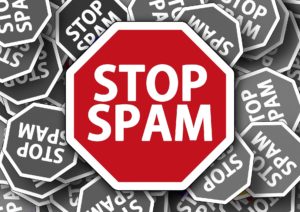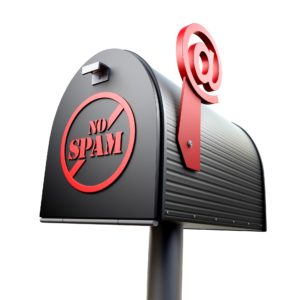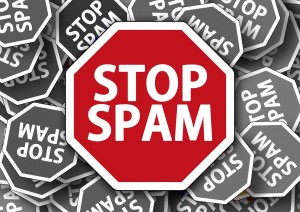30+ Words That Will Send Your Email To The SPAM Bin Every Time

What words will be blocked by a spam filter?
When you send an email campaign you want your audience to read the message, but spam emails are a significant problem. Your audience doesn’t want them, but an amazing 84% of email traffic is considered spam.
Those running mail servers, are constantly looking for ways to identify spam, to filter it out for their users. Yet, while this improves the user experience of mailbox owners, it does mean that for some businesses, their emails are accidentally labelled as spam and filtered out. If this does happen, the chances of your email being read are dramatically reduced.
There are numerous reasons why an email campaign might attract the attention of spam filters. Some of these are hard to control, but you can control the words used in your subject line, preheader text, and within the content of your email.
Some words will highlight a message as potential spam and therefore be filtered out. By avoiding these words, you can improve the delivery rate of your emails and achieve a better ROI.
Here’s a quick list of word groups to avoid and other ways you can get the same message across.
1. Free/Cheap/Affordable/Save/Incredible Deal
Anything with the word ‘free’, ‘affordable’, ‘incredible deal’, ‘save’ or ‘cheap’ is a bad choice. Even if you place gaps between the letters you’ll likely be tagged as spam. To avoid this, you could use words like ‘complimentary’, ‘on the house’ or ‘without charge’.
Of course, it’s best not to really mention this in your email if you can. Instead, direct them to a landing page with an interesting call-to-action that contains these promises.
2. Act Now/Apply Now/Order Now
These are important because they are something you might use as a call-to-action. They both look urgent and tell the audience what they must do. However, no-one can act on something if they don’t see the message. Therefore, avoid these two phrases in your campaigns.
3. Increase/Guarantee/Promise
These are common words used in a lot of spam and are therefore often filtered out. There’s not much you can replace these words with, so instead, use these words on your landing page from the email campaign.
4. Anything With Marketing
Marketing emails seem to be highly targeted. Words in this group include: ‘email marketing’, ‘internet marketing’, ‘multi-level marketing’, ‘online marketing’, ‘search engine listings’ and ‘web traffic’. There are just too many companies who don’t provide a good service in these areas and make fake promises that mail servers tend to be more cautious.
5. Medical Related
There has been a long-standing issue with online medical sales, so anything that looks health or medical related is often counted as spam. Some of the common ones include ‘prescriptions’, ‘stop snoring’, ‘weight loss’, ‘diet’, ‘pills’, etc. There’s a long list of these. So, if you’re in the medical profession, or want to use a medical term in your campaign, be warned it might not work.
6. Financial Words
Another common set of words which are targeted by spam filters are those related to the financial services. This could be banking, investments or any currency. There are lots of these words and if you are thinking about using them, then you are likely going to have a smaller audience due to filters.
Notable words include: ‘income’, ‘billion’, ‘cash’, ‘compare rates’, ‘credit’, ‘refinance’, ‘income’, ‘earn’, etc.
Conclusion
You want your email campaigns to be successful, so don’t use words that spam filters target. We’ve given over 30 words you need to avoid using if you are to skip past the spam filters. What you use instead might need to be inventive, but for the potential rewards, it’s worth the investment of your time.
What words do you use in your spam filters? How do you create meaningful copy to avoid spam filters?
Let us know your tips in the comments below.
Image provided by Pixabay
Read post 1 Comment. Tagged in: email copy, email spam, spam
What Happens When You Spam Your Contact List

What happens when you send spam to your contact list?
Email marketing is a powerful sales tool. But, like with all marketing and sales tools, there’s an element of the numbers game; the more marketing you send, the more sales you’ll achieve. Therefore, there are those organisations who are willing to ignore laws and email etiquette and send copious amounts of emails to subscribers or to email addresses they’ve had no contact with.
This is called spamming.
While this might sound like a good way to grow your customer base, it’s not. There are significant ramifications associated with this practice. Here’s what could happen if you spam your contact list.
1. You Get Fined
If your contact list didn’t give you permission to contact them, then you could be fined. Many nations have laws against unsolicited marketing emails, and the fines can be high. While most people ignore spam, the more you send out, the greater the chance you will be reported to the relevant authorities.
Never buy an email contact list and always seek permission of any website user, consumer, etc. before you send an email.
2. Higher Unsubscribe Rate
The more people you have on your list, the more profitable your email marketing campaigns are going to be. That is why this loss can be so devastating, but 53% of consumers say they get too many emails from the brands they subscribed to and this has led them to discontinue their subscription.
However, don’t send too few emails, as this can also be a reason for unsubscribing. According to research, once every two weeks seems to be a good frequency.
3. Poor Open And Click Through Rates
If you continually email your contacts, they are going to get bored of your marketing messages, especially if you are sending the same message all the time. This often results in your marketing messages being ignored, binned and forgotten. Statistically speaking this can mean that your business’ open and click through rates plummet against industry standards.
There are two ways to solve this. Firstly, reduce the amount you are sending emails to your contact list. Secondly, change the message of your email marketing campaigns, so they become more useful.
4. Your Server Gets Reported
If you are using your own mail server, then that can be reported, and this can make it difficult for future campaigns. A black-listed mail server can sometimes be prevented from sending emails to other servers altogether, so future campaigns will never reach their intended audience.
There is only one way to solve a blacklisted server, and that is to start again with a new server. This is an expensive, time-consuming task.
5. Your Reputation Is Ruined
Organisations that spam their contacts are often remembered, especially if they are known to the audience. This can have a devastating impact on a brand’s reputation both online and offline. One example could be the damage it can do to the referrals your brand gets from subscribers. Many people won’t recommend a brand that spams them. So, you’ll lose a sales avenue.
You’ll also find that you will have to manage your reputation more carefully if you send spam – dealing with negative comments all the time on social media, in your inbox and other marketing avenues. Customers you contact for a follow-up phone call will also be more hostile to your approaches. Therefore, your sales team will find it harder to sell.
Conclusion
Email marketing is a powerful tool for any business to use to collect information and sell to a specific audience. It is also a tool that can be abused with spam. However, this will always end badly for the company sending spam emails.
Be mindful of the number of emails you are sending to potential customers to ensure you aren’t spamming your audience. It could help you make more sales.
How often do you send emails to your marketing list? Have you tried reducing the number?
Let us know in the comments below.
Read post Post a Comment. Tagged in: ant-spam, spam, spamming
3 Things You Need To Do To Avoid Sending Spam

How can you stop spam?
Email marketing has been plagued by one tactic that has always meant that businesses have to be careful how they conduct themselves: spamming. The practice, where customers are sent copious numbers of emails or are sent emails they never wanted, has led to legislation across the world. Some countries have included legislation that has meant that a company found sending spam could face hefty fines.
Spam isn’t exactly worthwhile. Unsolicited emails generally produce poorer results, low return on investment and damage brand reputation. While having a large enough list of names might offer better sales over one email – in the long term and after potential legal costs, the returns will be greatly diminished and your brand’s image ruined.
It is the company which is represented in the email, and not any third party supplier, who is responsible for the conduct of the email marketing campaign. Therefore, it is important that you know how to avoid sending spam. In theory, this only requires the careful implementation of three checks in your campaigns before you send a single email.
Here are the three checks you must complete to avoid sending spam and ensure your subscribers only get the messages they want.
1. Use Volunteers
The first and most important check is to ensure that your subscribers are only those that have signed up to your email marketing list in the first place. It is illegal to send emails to anyone who has not opted to receive emails.
While it is not a legal requirement in every country, the best way to ensure that this step is taken is to use the double opt-in methodology. This is when a subscriber signs up to your mailing list on your website or another platform (i.e. social media) and is then sent an email asking for their confirmation.
This helps to prevent your emails being marked as spam by ensuring that your subscribers know what their actions will result in. It also gives them a chance to say they don’t really want the emails or to prevent a third party from signing up people who have no interest in your products and services.
Many email marketing service providers make this system available as part of their service for free, so there is no complicated programming or other activity to undertake.
2. Segregate Email Subscribers
Another important action is to ensure that you are sending the right emails to your subscribers. This process, known as segmentation, is a vital step to ensure that your business’ contacts aren’t sent marketing messages that they aren’t interested in or that are irrelevant to them.
For instance, imagine you run an electronics store and you have a deal on a complimentary product to another. Sending it to everyone on the list will result in many people receiving the email who don’t have the original product and therefore, buying the complimentary product is not worthwhile. By segmenting the list so that only those who have bought the first product can result in better uptake and results.
Segmentation can take many different directions so it is best to understand your audience and use their behaviours to help you determine what segment they need to be assigned to.
3. Limit Your Email Campaigns
The more emails you send, the more like spammers you will appear. That is the simple conclusion from those that continuously send emails. Customers grow weary, even if all they do is delete your email. Therefore, consider how often you are creating your email campaigns and sending them out.
There isn’t an optimum number for the frequency of emails to send per week as it will differ between audiences, industries and products. However, if you are getting a high proportion of complaints or a high unsubscribe rate with your email campaigns, you might need to rethink your strategy.
If you segment your list, as mentioned above, this can also help reduce the number of emails each subscriber will receive.
Conclusion
Email marketing is highly effective when it comes to generating interest and sales for your brand’s products or services. But it is important that you ensure your company doesn’t practice spamming tactics. To comply with laws and best practice, it is best to use the double opt-in methodology, segment email lists and limit the frequency of emails. This way you will always seem legitimate and be in favour with those on your mailing list.
Read post Post a Comment. Tagged in: email marketing strategy, spam, SPAM laws
Should The Unsubscribe Link Be at the Top of Emails?
There has been a lot of discussion recently about unsubscribe links. Much of the discussion has revolved around the idea of placing the unsubscribe link at the top of your marketing emails instead of the traditional location at the bottom of the email.
Have you thought about moving your unsubscribe link?
Spam filters are getting more stringent on the emails they allow into inboxes. People are also becoming frustrated with the amount of email they want. Instead of looking for the unsubscribe link they are quick to hit the spam button.
The argument for locating your unsubscribe button centers on the idea that you want only the people on your list that truly are interested in your email content. If someone doesn’t want to subscribe you want to make it easy for them to leave without tarnishing your brand by hitting the spam button.
Let’s look at a few ways you can design your email unsubscribe links to ensure your list is optimized for only the best subscribers while allowing others to leave without fuss.
Read post Post a Comment. Tagged in: spam, Unsubscribe